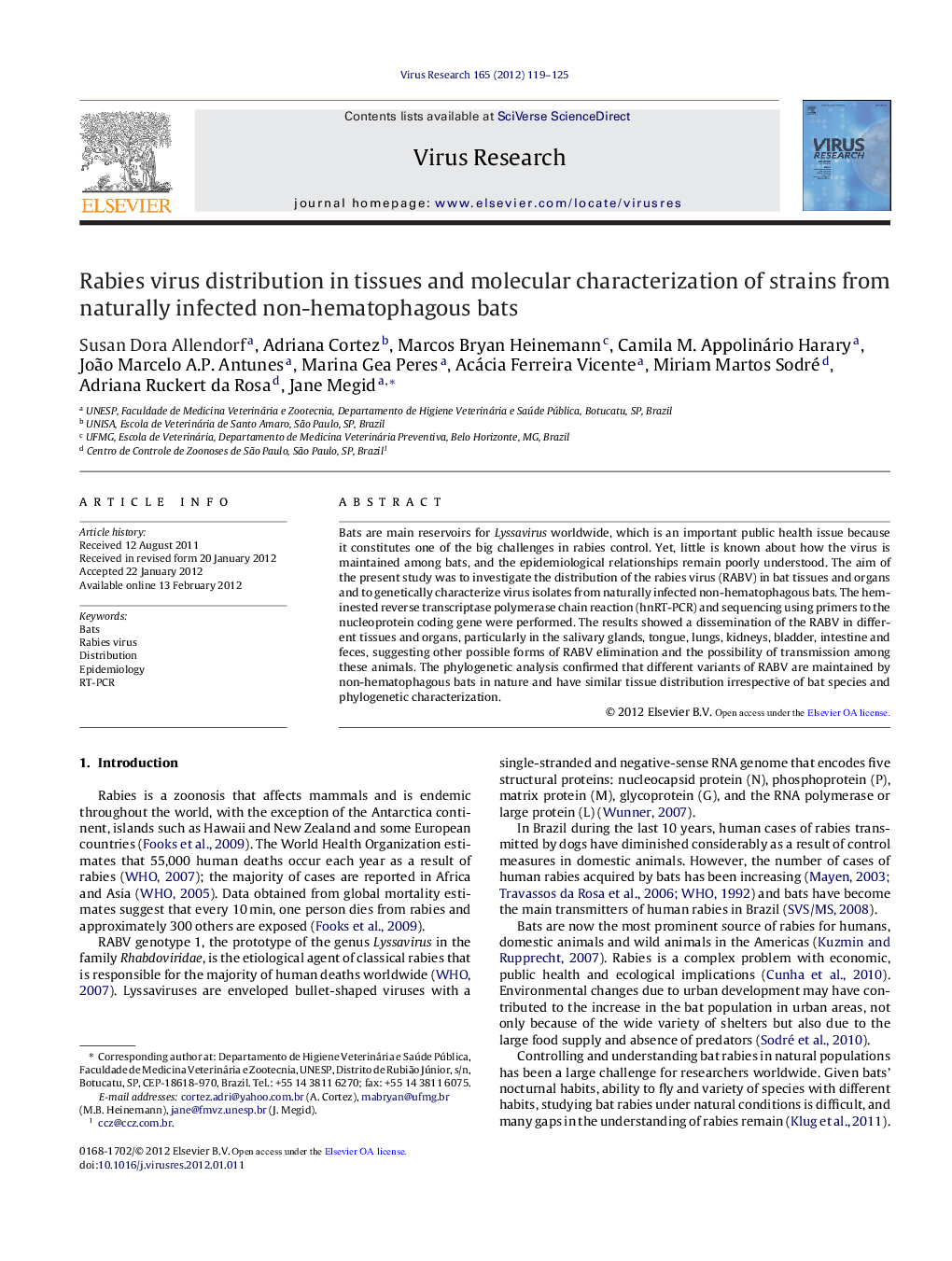| Article ID | Journal | Published Year | Pages | File Type |
|---|---|---|---|---|
| 6143186 | Virus Research | 2012 | 7 Pages |
Bats are main reservoirs for Lyssavirus worldwide, which is an important public health issue because it constitutes one of the big challenges in rabies control. Yet, little is known about how the virus is maintained among bats, and the epidemiological relationships remain poorly understood. The aim of the present study was to investigate the distribution of the rabies virus (RABV) in bat tissues and organs and to genetically characterize virus isolates from naturally infected non-hematophagous bats. The heminested reverse transcriptase polymerase chain reaction (hnRT-PCR) and sequencing using primers to the nucleoprotein coding gene were performed. The results showed a dissemination of the RABV in different tissues and organs, particularly in the salivary glands, tongue, lungs, kidneys, bladder, intestine and feces, suggesting other possible forms of RABV elimination and the possibility of transmission among these animals. The phylogenetic analysis confirmed that different variants of RABV are maintained by non-hematophagous bats in nature and have similar tissue distribution irrespective of bat species and phylogenetic characterization.
⺠We have investigated the distribution of RABV in bat tissues and organs and genetically characterized the isolates. ⺠The RABV was detected in different sites suggesting other possible forms of RABV elimination and transmission. ⺠Different variants of RABV are maintained by non-hematophagous bats in nature. ⺠We observed a similar tissue distribution irrespective of bat species and phylogenetic characterization.
